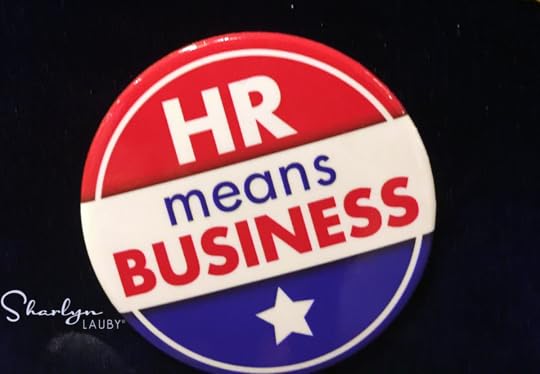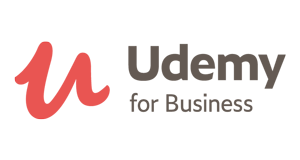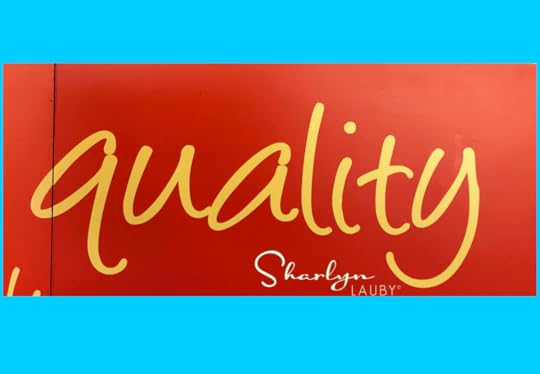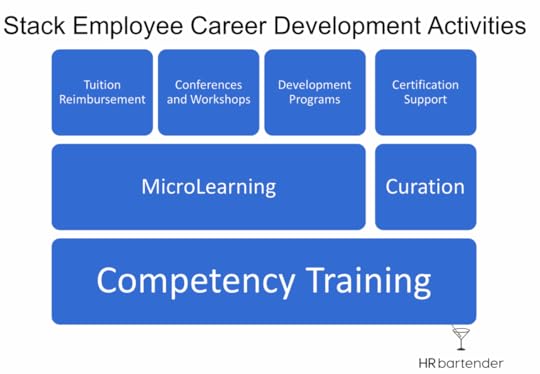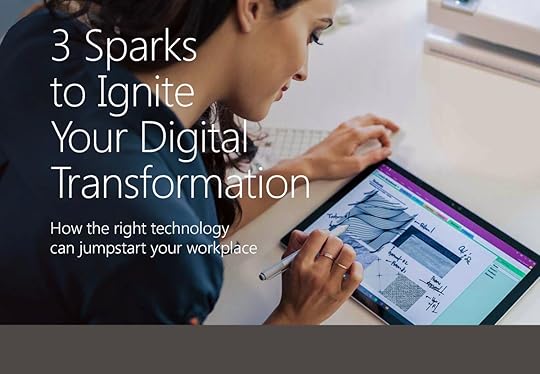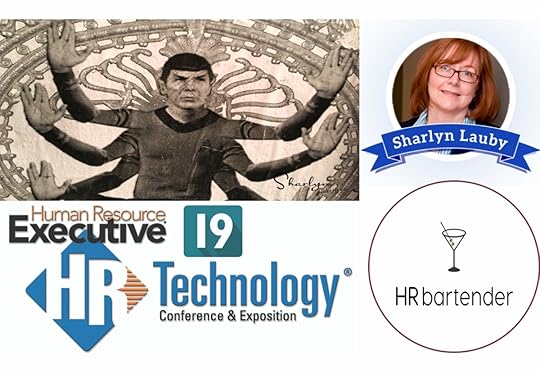Sharlyn J. Lauby's Blog, page 112
September 9, 2018
Everything HR Needs to Know About Blockchain
One of the somewhat newer technology-related topics to surface is blockchain. When it first came out, I must admit that I didn’t see it having much of an HR component. So, I started paying attention…but at a distance. Well, I was wrong.
The Society for Human Resource Management (SHRM) has written a few articles about the topic including “Is HR Ready for Blockchain?” and “Blockchain Could Phase Out Employment Screening”. It really made me take notice and realize that I need to learn more about what blockchain technology can do for HR and business.
To help us demystify blockchain, I spoke with Jessica Griffin, vice president of global product management for Workforce Ready at Kronos Incorporated. Jessica and I had the chance to talk during SHRM’s annual conference in Chicago. I’m grateful that she was willing to share her expertise with us.
Jessica, let’s start with a definition. What’s blockchain?
[Griffin] A blockchain is a distributed public digital ledger used to track records. For anyone learning about blockchain for the first time, there is a lot to unpack in that explanation, but I promise it’s not as confusing as it may seem. For starters, a block is simply another word for record, and a blockchain is simply a chain of records. What makes blockchain unique from other recordkeeping systems is that it is distributed, which is another way of saying the chain of records is stored across a large network of independent computers.
This distributed approach is what sets blockchain apart because it provides a new level of accuracy, security, and privacy. A blockchain contains every version of a record since it was created – which makes tracking changes over time and auditing incredibly simple. To alter one block would require altering all of the blocks to avoid detection. Because the blockchain is spread across a large network as opposed to a single database, this becomes an extremely challenging proposition, especially because every block is encrypted with a unique key that only the owner of that block knows.
From your definition, it sounds like blockchain has been around for a while. I wonder why we’re just hearing about it.
 [Griffin] The idea of a blockchain was first theorized in the early 1990s as a manner to ensure document timestamps could not be altered. However, the first blockchain wasn’t put into practice until nearly 15 years later, in 2008, with the launch of the cryptocurrency Bitcoin. This is likely the context in which most people familiar with blockchain have heard about it. While the financial industry was the first to begin exploring blockchain applications, other industries, such as human resources, are not far behind.
[Griffin] The idea of a blockchain was first theorized in the early 1990s as a manner to ensure document timestamps could not be altered. However, the first blockchain wasn’t put into practice until nearly 15 years later, in 2008, with the launch of the cryptocurrency Bitcoin. This is likely the context in which most people familiar with blockchain have heard about it. While the financial industry was the first to begin exploring blockchain applications, other industries, such as human resources, are not far behind.
Bitcoin, which runs on blockchain technology to securely track all Bitcoin transactions, burst into the public consciousness this year when its value skyrocketed to over $10,000 per coin. Since then, Bitcoin’s value has come back to earth, but the excitement around blockchain as a new technology remains high. While tracking financial transactions is one obvious application for blockchain, there are actually a host of HR applications across the human capital management lifecycle.
Why are businesses so focused on it right now? Is it simply “all about the bitcoins”?
[Griffin] It’s safe to say that blockchain is rapidly racing up the hype-cycle curve and for good reason. Given all the news lately about personal data being misplaced, stolen, or used without permission, businesses are looking for innovative ways to ensure that employee and customer data is kept safe, and that their own intellectual property is being handled securely. They also want a tool which allows employees and customers to take more control over that data.
It’s still early on, but blockchain has the potential to achieve this. Bitcoin runs on a blockchain which is public and spread across many computers, some secure and others likely unsecure. Enterprises are now investigating the benefits of private blockchains. A private blockchain leverages the same distributed architecture to keep track of blocks, but instead of running publicly, it runs privately on a network where all of the computers are known and proven secure.
How does blockchain impact human resources?
[Griffin] There are a number of examples where HR departments can utilize blockchain to improve the efficiency of their activities and processes. Applicant and employee verifications are one area that is seeing the most traction right now. Hiring and onboarding is a vital but tedious portion of the employee lifecycle for both the recruiter and the candidate, but blockchain can significantly streamline it.
At its core, blockchain provides a platform for companies and institutions to work together more efficiently. A lot of organizations have made tremendous strides in getting the paper out and moving to a digital system, but now there is a huge amount of file transfer-based sharing of information.
For instance, imagine streamlining benefits administration and carrier connections. This is one of the most time-consuming and error-prone activities for HR teams. A blockchain approach would dramatically streamline this process and others like it that involve third party partners, especially when you inherently trust the underlying technology will increase each transaction’s security, efficiency, and transparency.
I understand that security is one of the big advantages of blockchain. So, I could see it being adopted for functions like you’ve mentioned – payroll, background checks, and other sensitive areas (like health records).
[Griffin] Imagine a digital token for each candidate or employee. That digital token stores their complete professional data set, including employment information, personal information, financial background – all of the data that today is spread across their resume, reference, and background checks. The applicant or employee could easily use digital keys to release various pieces of the data set in order to complete an application or validate a background check.
At the other end of the human capital management (HCM) lifecycle, payroll and tax can also benefit from blockchain. Payroll, despite all its complexities, is relatively straightforward when your employees live in one area and all have bank accounts with trusted institutions. It gets a lot more challenging when the organization needs to make cross-border payments to a global workforce, or if an hourly worker lives in a rural location that is underserved by banks and credit unions.
In those cases, organizations can securely transmit payroll information through a blockchain network, enabling institutions outside of those you typically interact with to securely access the information and distribute payment to those employees.
Last question, what do you see as Blockchain trends we should start paying attention to now?
[Griffin] For those who are interested in new ways for blockchain to influence HR technology and processes, they should start by keeping an eye on what is happening with blockchain outside of HR.
New technologies, like blockchain, almost always hit existing value chains first. For example, financial records and legal contracts are one area where blockchain’s promise is already being explored with depth. For this reason, I’d suspect employee contracts and records may be the first data to move into the blockchain. It’s arguable that these solutions have the greatest potential for growth as their associated benefits are likely to far outweigh their cost of adoption.
Disruption has been the name of the game in the HR technology landscape recently and that is going to continue. Organizations should exchange in frank discussions with their vendors about how they are using not just blockchain, but all emerging technologies, including artificial intelligence, machine learning, and responsive design, to deliver the more possible efficiency and the best possible employee experience.
A huge thanks to Jessica and our friends at Kronos for sharing their thoughts and expertise. If you want to do as Jessica suggested and stay on top of the latest trends in HCM, be sure to check out the Kronos blogs including The Workforce Institute and What Works blogs.
I’m sure you realize, just like I did after speaking with Jessica, that we’ve only just scratched the surface of blockchain technology and the value it can bring to HR and business. But there’s some very interesting potential for the HR function. I could see blockchain not simply making our work easier and more efficient but keeping employee data more secure. And that’s a business priority.
Image captured by Sharlyn Lauby while exploring after the HR Technology Conference in Las Vegas, NV
The post Everything HR Needs to Know About Blockchain appeared first on hr bartender.






September 7, 2018
Bookmark This! Employee Leave Donation Programs Edition
I received this reader question a few months ago and it’s had me stumped. While I know that employee leave donation programs do exist, I’m not aware of many companies that promote it. According to the Society for Human Resource Management (SHRM), 11 percent of organizations permit vacation donations and seven percent permit sick leave donations.
Hey there. I’ve spent some time reading your blog while researching a program I would like to implement. Very informative, thank you! I have a question that I could use advice on how to move forward with. I own an Irish Pub in Iowa. We have a very close-knit family among our staff. A lot of them have come to us while on hard times. We take care of each other, and I am immensely proud of that fact. My wife and I have given loans to deserving staff who have fallen on hard times. We ask for nothing in return and they can work it off. These kids are always thinking about one another.
What I would like to start is a program where staff could contribute say a dollar a shift to a fund. My wife and I will also either match or 50 percent match it. We would have an anonymous submission system where a staff member can nominate another for assistance of some form. Financial or otherwise. A board of directors made of employees and (possibly) either my wife or I will then vote and approve payments for whatever. Rent assistance, child care, medical, etc. in times of need where the staff member is trying their best and just needs a little more bump of help. I’d like to keep assistance secret, so nobody feels bad for accepting help or jealous that someone else was aided.
Do you see any possible pitfalls to this program or have advice on how to best handle it while not setting us up for legal reprisals?
In my experience, the idea of employee donation programs comes up often. Examples are after natural disasters like a hurricane or when an employee falls on unexpectedly hard times. In doing some research, I found some articles that might be helpful.
Let me add that I believe this is one of those times when it would be helpful to reach out to your labor attorney. They can get you guidance on how to set up the program, the tax implications, and what do consider if a challenge to the distribution of funds is made.
The law firm of Morgan Lewis wrote an article on “Establishing a Charitable Leave Donation Program” after Hurricane Harvey last year.
Sullivan Benefits has a compliance overview on “Employee Leave-sharing and Donation Programs”.
OnePoint Human Capital Management outlines the steps for creating a paid time off (PTO) or leave donation policy.
It might also be helpful to look at other company policies to get some creative inspiration. Here are a few from:
Finally, here’s an article of caution from a law firm on the potential for discrimination and tax issues when employees donate PTO.
Bottom-line. Employee donation programs can be done. And they’re a nice thing to do. But organizations need to get their facts to make sure the program is constructed appropriately and administered fairly.
Image captured by Sharlyn Lauby after speaking at the SHRM Annual Conference in Washington, DC
The post Bookmark This! Employee Leave Donation Programs Edition appeared first on hr bartender.






September 5, 2018
Change Management: 5 Situations When You May Need It
According to global management consulting firm McKinsey & Company, over 70 percent of change management efforts fail. No surprise, this is due to several reasons: low employee engagement, lack of management support, poor collaboration, and no accountability. The real surprise is why – after knowing the reasons and the odds that change efforts fail – we haven’t found a way to remedy the situation.
Because the benefits of conducting change management activities are significant. A different McKinsey study points out that companies with excellent change management efforts gained an average of 143 percent of the returns they expected. So, when organizations manage change well, they see a positive change to the bottom-line.
When Should You Think About Change Management
It would be tempting to say, “all the time”, but that’s not really a fair answer. However, there are moments when organizations should consciously ask the question, “Would it be helpful to include a change management activity in our plans?” Here are five regularly occurring situations where it could make some sense:
When there’s something new happening. Many organizations think about change management for large-scale implementations like bringing a new technology solution in house or adding a new product line. But what about the small changes like a new policy or procedure? Those are often the types of changes that frustrate employees the most. Not because the change is bad or wrong, but because employees weren’t adequately prepared.
Organizations would benefit by thinking about change activity in small changes as well as large ones. It’s an opportunity to set expectations and make sure everyone is on the same page.
When something needs to be fixed. Companies regularly find out that a process they thought was working fine isn’t working anymore. Or they discover that a piece of equipment is broken and instead of repairing it, they’re going to have to replace it with a newer (and different) model. Stuff happens, and organizations have to react accordingly. Makes total business sense. But that doesn’t mean the process of fixing what’s broken is easy.
Creating process maps can help organizations communicate with employees about the process of change. Managers can share the steps to move from the current state to the desired one.
When business is falling behind. We’re not just talking about the sales numbers here. Companies might find that a lack of infrastructure is holding them back. For example, lots of companies today rely on technology to reduce redundancies and help their business grow. Older hardware and software could create outages that limit the company’s ability to service customers.
Technology is a part of the company’s brand, both for customers and employees. When people can deposit checks, book their next vacation, schedule a doctor’s appointment, and much more on the internet…they expect to do the same at work. Organizations cannot afford to fall behind customer and employee expectations.
When the company wants to lead the competition. Every organization has to make the strategic decision whether they will lead or lag the market. There are pros and cons to each. Part of the decision could be based on the likelihood of your industry for disruption. For organizations that choose to lead, that means change will happen proactively, faster, and more frequently. And for organizations that choose to lag, be prepared to react to the surrounding change.
Whether you lead or lag, change management to some extent becomes a part of culture. But dealing with change proactively is significantly different than reacting to it. Employees need to know how to deal with both effectively.
When an employee leaves. Or arrives for that matter. The four situations we’ve discussed so far have dealt with changes in processes and strategy. Change management is also necessary when the organization makes people changes. Again, it’s not because the new hire or the departing employee are terrible employees. Every individual is different and we all have to get used to new working methods, communication preferences, and leadership styles.
In an article on LinkedIn, author Abby Falik suggests that individuals should create “user manuals” to share how we like to work and our quirks. This could be a powerful orientation or onboarding activity.
Something to note: While I’ve described these five situations in the context of organizational change, we can also look at each of the 5 situations above and apply them to ourselves personally. All of us have personal goals to accomplish and obstacles to overcome. We experience change when we get a promotion or change companies. So, we have to master change management at an individual level as well.
Formal Change Management Efforts Pay Off
Some might look at this list and say, “This sure looks like we should consider change management ‘all the time’.” But when you look closer, that’s not the case. There is some truth to the statement “If it ain’t broke, don’t fix it.”
But when change is necessary, organizations need to embrace change management and not make assumptions like “it’s a small change” or “no one will notice” or “we did change management training a couple of years ago”. Investing in change management is not only about mitigating setbacks. It’s about realizing gains.
P.S. Speaking of realizing gains, I hope you’ll join me and the Udemy for Business team on Wednesday, September 19, 2018 at 9:30a Pacific/11:30a Central/12:30p Eastern for a discussion about “5 Ways to Use Change Management for Positive Impact”. Think of the webinar as part two in a series about change management. We’ll be offering real-life examples of how to implement change management in these situations. Oh, and if you can’t join us, sign up anyway and we’ll make sure you get the recording. I look forward to seeing you then!
Image captured by Sharlyn Lauby after speaking at the SHRM Annual Conference in Washington, DC
The post Change Management: 5 Situations When You May Need It appeared first on hr bartender.






September 2, 2018
Everything #HR Needs to Know About HR Technology
In the U.S., this weekend is the Labor Day holiday. It’s a holiday to celebrate the American worker. I’m sure there are many other countries that celebrate their employees throughout the year. It totally makes sense to recognize the thing that makes your organization unique – people.
People also make your organization productive. So, I thought for this Labor Day weekend, I would round up a series of posts on a topic that people just can’t live without these days – technology. Employees use technology to find a job, get onboarded, receive training, and much more.
Because technology is moving at such a rapid pace, it can be a challenge to keep up with all of the tech terms and acronyms. So, if you’re wondering what the difference is between AI, ERP, HCM, and GDPR, here are some posts that can help:
Artificial intelligence has become part of today’s HR world. But what is it and how can it benefit us? Experts help us understand AI and how to use it.
Tech tools come and go, but many remain important. Boolean search helps recruiters source candidates faster. And that saves money in today’s war for talent.
Bots have become an integral part of daily work life. No surprise that they are part of HR too. Bots are being used to help recruit, onboard and engage.
Cloud Computing (aka The Cloud)
The cloud – or cloud computing – is permeating almost every aspect of HR technology. To learn everything about the cloud, we ask Kronos to fill us in.
Enterprise Resource Planning (ERP)
The latest on the HR Bartender series on HR Technology. What is an ERP and how does it compare to a HRMS? Brian Sommer from TechVentive has the answers.
General Data Protection Regulation (GDPR)
GDPR, or General Data Protection Regulation, is designed to protect all EU citizens from data and privacy breaches. Even in the US, HR pros need to know about GDPR.
Human Capital Management (HCM)
HR technology is a growing field. It can get pretty confusing. To help, Bill Kutik, co-founder of the HR Technology Conference shares everything HR needs to know about Cloud HCM.
Machine learning is quickly becoming an important data tool for HR professionals. What is it and how does it differ from artificial intelligence? Dr. Thomas Walsh from Kronos shares is expertise.
Search Engine Optimization (SEO)
SEO isn’t just for marketers. HR pros need to know about SEO. So we asked Susan Vitale at iCIMS to share everything HR needs to know about SEO.
SaaS – software as a service – is a term we’ve all heard before. But what is it exactly? The experts at HR Direct tell everything to know about SaaS.
The Internet of Things – or IoT – is the latest technology term for HR pros. It’s all about connectivity but it’s much more than that.
HR pros need to know about software user experience (UX). Ultimate Software’s Martin Hartshorne tells us everything HR needs to know about user experience.
Organizations do not have to choose between people and technology. They are both important and should peacefully exist together to benefit the business. That being said, it is important for organizations and individuals to understand the latest technology terms, so we can ask good questions and make good decisions about the kinds of technology that will work best for us.
P.S. Speaking of HR technology, I’m excited to be spending next week at the HR Technology Conference in Las Vegas. It’s always a very educational and informative event. If you’re not planning to be there, be sure to follow the #HRTechConf event hashtag on Twitter and check out the HR Tech Insiders blog. It’s a great way to see the happenings from the comfort from your office.
Image captured by Sharlyn Lauby while exploring the Wynwood Wall Art District in Miami, FL
The post Everything #HR Needs to Know About HR Technology appeared first on hr bartender.






August 31, 2018
5 Quality #HR and #Business Links Worthy of Your Attention
HR Bartender is going to have some scheduled maintenance over the next few days. Our hosting company tells us that the site should be fully functional during that time and you shouldn’t notice anything different. But we all know that stuff can happen and I’m a safety girl. So, I wanted to offer you a Plan B just in case you’re looking for some high-quality human resources and business content.
Here are five links that are worth checking out.
You know I’m a planner. I loved this article from Sarah Von Bargen on “Why You Need to Literally Schedule Fun Into Your Life and How to Do It”. Great way to not feel guilty about talking some “me” time. Just put it on the schedule!
If you have a moment, check out my webcast with Tony Lee, vice president of editorial at the Society for Human Resource Management (SHRM) on “Talent Strategy: Aligning the Recruiter and Candidate Experience”. We discuss what job seekers want from companies and how SHRM is building programs to help talent acquisition. Listening to the webcast earns you recertification credits from SHRM and the HR Certification Institute (HRCI).
Two of my favorite people recorded a webcast. Laurie Ruettimann and Jennifer McClure talk about personal branding on the new podcast “Let’s Fix Work”.
Speaking of podcasts, I also had a pleasure of recording one with Peter Clayton at Total Picture about my latest book, “The Recruiter’s Handbook: A Complete Guide for Sourcing, Selecting, and Engaging the Best Talent”. It was a wonderful conversation about talent acquisition (if I do say so myself!) Peter asked some unusual but relevant questions. I hope you’ll follow the links and take a listen.
Oh! And I forgot one activity in my latest article on the “5 Must-Attend Activities at this Year’s HR Technology Conference”. On Wednesday, September 12, 2018 at 3p Eastern / 12n Pacific, SHRM will be hosting their annual #NextChat from the conference. It’s sure to be a great time, so check out the links, mark your calendar now and be sure to join us!
So, cross your fingers that all goes well with our site maintenance. And even if everything goes off without a hitch, please feel free to visit these other resources anyway. But don’t stay away too long. We’ll be back to our regular schedule in just a couple of days.
Image captured by Sharlyn Lauby while exploring the streets of Gainesville, FL
The post 5 Quality #HR and #Business Links Worthy of Your Attention appeared first on hr bartender.






August 28, 2018
Final Paycheck Has Too Many Deductions – Ask #HR Bartender
Final paychecks are always a source of employee questions. If you think about it, kinda makes sense. We don’t get that many final paychecks. Today’s reader note is questioning the number of deductions on their final pay.
Hi. I got fired last month in District of Columbia. When I asked my employer to pay my final paycheck, including my unpaid sick and vacation as well as severance pay, they put the severance pay in the same final check as bonus. Now, my deductions are through the roof – making my net pay very small.
What legal recourse do I have since the company refuses to issue a correction?
I must admit that right around the time I received this note, I saw a very informative article on “Tips for Obeying Final Pay Rules” by Lisa Nagele-Piazza, J.D., SHRM-SCP, senior legal editor for the Society for Human Resource Management (SHRM). So, I asked her if she would help answer this reader question. And thankfully she said “yes”.
I know you realize this but just as a reminder, Lisa’s comments should not be construed as legal advice or pertaining to any specific factual situations. She’s doing this as a give back to our profession. If you have specific detailed questions, they should be addressed directly with your friendly neighborhood labor attorney.
I know that the relative time when final paychecks are issued varies by state. But is the subject of how an employee’s final paycheck is processed a federal or state issue?
[Nagele-Piazza] This is generally a matter of state law. Under the federal Fair Labor Standards Act (FLSA), an employee’s wages are due on the regular payday for the applicable pay period—so that rule sets the floor for all wages owed to an employee whether we’re talking about the final paycheck or not.
Under state law, however, final wages could be due in a shorter time period or even immediately. Each state law has its own nuances, so it’s best to carefully review the applicable law.
In this scenario, the reader talks about final pay, unpaid vacation, severance, etc. Who controls how the final check is cut – employers or employees?
 [Nagele-Piazza] This will usually be governed by state law, too, though the employer’s policies and practices might also come into play. For example, in some states, accrued vacation time is considered wages earned and must be included in the final paycheck. In other states, employers only have to pay out unused vacation time if they have a policy or practice of doing so.
[Nagele-Piazza] This will usually be governed by state law, too, though the employer’s policies and practices might also come into play. For example, in some states, accrued vacation time is considered wages earned and must be included in the final paycheck. In other states, employers only have to pay out unused vacation time if they have a policy or practice of doing so.
There are limited circumstances in some jurisdictions that require an employer to provide severance pay. Typically, though, this will be a matter of contract (such as a collective bargaining agreement), employer policy, or the employer’s good-will.
Depending on how it is administered, a private employer’s severance-pay plan may be subject to the Employee Retirement Income Security Act (ERISA), which provides employees with certain rights and remedies.
What are the advantages and disadvantages of separating final paychecks?
[Nagele-Piazza] Employers need to make sure they are deducting taxes appropriately, whether it is regular income, bonuses, or other supplemental wages. Traditional severance payments are generally considered supplemental wages by the Internal Revenue Service (IRS). That means employers can choose either the optional 25 percent flat rate withholding or the aggregate method for all payments.
An employer may decide to pay severance as a lump sum or over a certain period. Each method has its own pros and cons. States laws may affect how severance is paid, and in some states, the payment type can affect the receipt of unemployment insurance benefits.
Employers might choose to separate severance pay from final pay. Final pay must be timely issued in accordance with the FLSA and state wage and hour laws. If the severance pay is not an entitlement, employers will usually have workers sign a release of claims and will provide the severance pay as consideration for the release. Employees will have an opportunity to review and negotiate the terms of the severance package and may have a certain amount of time to sign (and also to revoke) the agreement. So, employers will want to wait until everything is finalized before issuing the check.
As always, there may be additional state-law considerations. California law, for example, imposes waiting-time penalties when final pay isn’t delivered to workers on time. Sometimes, employers may opt to pay those penalties to an employee upfront if a check can’t be delivered immediately and in person. This should be in a separate check and it should be very clearly marked that the payment is intended to cover any waiting-time penalties.
The reader mentioned being fired. In general, does how an employee leaves the organization factor into how their final paycheck is issued?
[Nagele-Piazza] In some states, yes, the required timing of the final paycheck might depend on whether the employee’s separation was voluntary or involuntary. In other states, employees can be paid on the regular payday.
Last question. We don’t know if the reader took their issue to HR. If an HR professional has a question about paychecks, where can they go to get guidance?
[Nagele-Piazza] State government websites are a great place to find free and accurate information:
For example, an employer in Texas would want to look here.
A California employer would look here.
Of course, SHRM is a great resource.
Also, you can see another great SHRM article here.
My thanks to Lisa and the SHRM team for helping us with this reader question. I don’t say it enough…this is why I’ve been a SHRM member for decades. Having access to this type of information is worth the cost of membership.
When an employee is leaving the organization, they need information about their final paycheck. When to expect it and how it will be calculated. Regardless of how the employee leaves. The organization should take a moment to share the information.
Image captured by Sharlyn Lauby while exploring WorkHuman in Austin, TX
The post Final Paycheck Has Too Many Deductions – Ask #HR Bartender appeared first on hr bartender.






August 26, 2018
Stack Employee Career Development Activities
At this year’s Association for Talent Development (ATD) annual conference, the organization shared a new career development framework for talent development professionals. It’s really good and very intuitive, so I suggest you check it out to get some solid information about how to develop your skills.
I would also suggest checking out the framework because I think we can use it in designing a career development framework for our employees. I really like flexible models and I think this is one. While the ATD framework focuses on talent development, I can see the education options becoming a framework for any role. Here are the seven career development levels that would make for a very comprehensive learning program.
Competency training. This is the traditional skills and knowledge training that employees need to effectively do their jobs every day. I’d like to think this happens, but I’m not naïve. Sometimes companies can’t or won’t make the investment. And we all know that has a detrimental impact on the bottom-line.
MicroLearning. There are moments when we just need a couple minutes of instruction and we’re good to go. I think back to when I needed to truss a chicken for a recipe. I went on YouTube, found a 2-minute video, trussed the chicken, and I was done. MicroLearning has a place in orientation, onboarding, and refresher training.
Curation. Learning doesn’t have to sit entirely in the human resources department. Employees can learn from each other. Employees can learn through self-learning activities. But that means giving employees the tools to curate information well.
Tuition support. I think of this two-fold. Both in terms of the very popular employee tuition reimbursement benefit but the emerging benefit of student loan reimbursement. I realize this isn’t always 100 percent financially supported by the company, but under the right circumstances, it can be valuable.
Conference and workshops. While attending conferences isn’t often coordinated with learning and development departments, that doesn’t mean it shouldn’t be considered learning. I’m also not suggesting that training departments start approving conference attendance, because there are other reasons that employees attend. Just don’t forget about the valuable educational component.
Certification support. A growing number of professions have certifications and credentials that allow employees to demonstrate mastery. This can be a great way for organizations to support employee development. It can also help with processes like replacement and succession planning.
Development Programs. Speaking of replacement and succession planning, organizations have to think about providing employees education for the jobs they have right now AND the jobs they will hold in the future.
As you’re thinking about employee training and development, ask yourself, “What types of learning do we offer employees?” and “Are we providing learning opportunities that help employees now as well as in the future?” This type of framework can also be something organizations could share with employees during orientation and onboarding to show how the company makes investments in an employee’s success.
So, think about stacking career opportunities. It’s a terrific visual way to share with employees the company’s learning programs.
The post Stack Employee Career Development Activities appeared first on hr bartender.






August 24, 2018
Digital Transformation: Small Activities Bring Big Results [infographic]
At this year’s Society for Human Resource Management (SHRM) Annual Conference, I had the chance to meet with the folks from Microsoft about digital transformation.
Digital transformation is the idea that technology can help individuals solve their digital and non-digital problems. It’s about making processes more efficient and effective using technology. And it’s important because, according to this infographic from Microsoft, two-thirds of global CEOs will have digital transformation as part of their business strategy.
One of the big takeaways for me was the part of the infographic focused on nomadic workers. Obviously, I picked up on it because I feel like I fall into that category. But I also believe that many professionals today wantthat flexibility, even if they’re not a freelancer or consultant. And there are resulting benefits to organizations in terms of employee satisfaction, engagement, retention, productivity, etc.
For organizations to fully leverage the advantages that nomadic workers can bring, I believe they need to prepare employees using training, development, and coaching. We can’t simply say, “Poof! You can work from anywhere now.” Trust me. It’s not as easy as it looks. Nor is it easy to manage.
For example, there are what might be considered simple processes that have to be completed differently. Note taking is a great example. The way I take notes in my home office should be different from the way I take notes when I’m traveling. When I’m on the road, I have limited space and paper is heavy, so I would like to rely on my technology for much of my notetaking.
Now you might be saying to yourself, “Sharlyn, it’s notetaking. How hard can it be?” But taking notes on a laptop has been a new experience for me. Microsoft wanted me to experience my own “digital transformation” (LOL!), they very graciously gifted to me a Microsoft Surface Book. Even though I’m familiar with the Windows operating environment, it’s a new device with a new way of doing things.
For example, the Microsoft Surface Book has a pen/stylus which I’ve never used before. I’m learning how to take notes in a whole new way. In fact, I downloaded a very informative ebook “The Innovator’s Guide to Modern Note Taking” to help me learn tips to maximize my productivity.
I’m using the notetaking story as an example of how organizations and employees need to view digital transformation. We can’t just give employees new equipment and expect miracles. We need to show them how to use it for maximum productivity. Even the smallest activities can be transformed with technology. And when a whole bunch of small activities are transformed, the result is huge!
Infographic used with permission from Microsoft.
The post Digital Transformation: Small Activities Bring Big Results [infographic] appeared first on hr bartender.






August 21, 2018
Leaders Drive Organizational Culture [poll results]
A few weeks ago, I asked the question “Which comes first: Leadership or culture?” Honestly, I must admit that I agree with the person who wrote me on LinkedIn to say this is the ultimate chicken or egg question. But you guys said in a 4 to 1 margin that leadership comes first.
It totally makes sense. It also means that organizations need to understand how this dynamic impacts them. If leaders drive organizational culture, then organizations need to:
Identify the leadership competencies that support organizational culture. Creating a world-class organizational culture doesn’t happen overnight. But it can be destroyed quickly with poor leadership. The company is going to want to have specifics on what it takes to keep their organization vibrant and desired by candidates and employees. These competencies should be included in the company’s hiring and learning activities.
Design their recruiting processes to achieve the cultural results they’re looking for. I don’t want to say that companies need to hire leaders that are a cultural fit because it’s possible that the culture stinks and the organization wants new leaders to come in and create change. On the other hand, if the organization isn’t looking for a cultural change, then they need to make sure the leaders they hire and promote are aligned.
Invest in leadership at every level. We’re talking about leadership here. Regular readers of this blog know that leadership and management are two different things. Leaders exist at every level of the organization. And if the company wants to maintain their culture, then they have to maintain their leadership. The only way to do that is with regular training, development, coaching, and mentoring.
Hold leaders accountable. When leaders do something that doesn’t align with the company culture, the organization needs to be prepared to hold that leader accountable for their actions. Even if that leader makes a lot of money for the company. If the company doesn’t do that, that’s tacit approval. And it begins the slippery slope of allowing leaders to chip away at the organizational culture.
On some level, I can see how company cultures are fragile. And a few bad leaders can have a detrimental impact on cultural structure. When that happens, it becomes very difficult to turn things around. That’s why investing in leaders is so important. Because they touch and shape and mold the company’s culture.
And the company’s culture is what sets the business apart – both from a candidate perspective and a customer perspective.
Image captured by Sharlyn Lauby after speaking at the SHRM Annual Conference in Washington, DC
The post Leaders Drive Organizational Culture [poll results] appeared first on hr bartender.






August 19, 2018
5 Activities You Do Not Want to Miss At the HR Technology Conference – #HRTechConf
One of my absolute must-attend events in the fall is the HR Technology Conference and Expo (nicknamed HRTech). This year’s conference is being held September 11-14, 2018 at The Venetian Hotel in Las Vegas.
If you’ve never attended HRTech, now is the perfect time. I don’t have to tell anyone the significance of technology in our personal and professional lives. HRTech attracts all the major players in human resources technology as well as emerging companies with very cutting-edge ideas.
I have to admit, I knew very little about HRTech prior to becoming a blogger. I’ve been going to the conference now for about five years, and it’s the people that keep me coming back. Sometimes technology gets a bad rap for preventing people from talking to each other. That’s not been my experience at HRTech and it’s what makes the event special.
I’m a firm believer in going to conferences with a plan. Here are five activities that I have on my calendar.
HR Tech: Plan Your Ideal Conference Experience. Industry expert and Founder of HRExaminer John Sumser is conducting a webinar on Thursday, August 23, 2018 at 2p Eastern that will tell you how to maximize your time during the conference. Specifically, he’s going to share how to identify the sessions and vendors that will get you the return on your investment. I do understand the webinar is in a few days so, if you’ve already got something scheduled, register anyway and get the recording.
Women in HR Technology. Don’t let the title deceive you. This isn’t a “women only” session. HRTech started this preconference workshop a couple of years ago and it gets bigger and better every year. So, spend Tuesday, September 11, 2018 learning about diversity, inclusion, and equality. You’re sure to find some great takeaways to bring back to work.
Wellness Pavilion. This might be a new addition to this year’s program – I know I’m looking forward to checking it out. While I love Las Vegas, I equally enjoy going to conferences that place an emphasis on wellness and wellbeing. And, I can’t wait to hear Arianna Huffington’s keynote session during the conference. Who says technology and wellbeing can’t peacefully coexist?!
HR Tech Talks. Speaking of new things, one presentation track I knowis new is HR Tech Talks. These are short (20 minute) presentations that will take place in the expo. The focus is on providing practical information is a casual, conversational format. I’m delighted to be one of this year’s speakers. Hope you’ll stop by to hear “Offboarding is Just as Important as Onboarding” on Wednesday, September 12 at 10:30a.
EXPO! A real star in the HR Technology Conference is the expo. I believe it’s important to support the sponsors and exhibitors that support our profession. And one of the ways to do that is by walking through the expo. HRTech has created a nice expo schedule where exhibitors can do demos of their product in the right environment for everyone.
So, if you want to learn more about human resources technology, it’s not too late to include HRTech in your schedule. Another thing that HRTech is really good about is discounts. You can save an extra $300 with Promo Code LAUBY18. I look forward to seeing you there!
The post 5 Activities You Do Not Want to Miss At the HR Technology Conference – #HRTechConf appeared first on hr bartender.






Sharlyn J. Lauby's Blog
- Sharlyn J. Lauby's profile
- 10 followers




